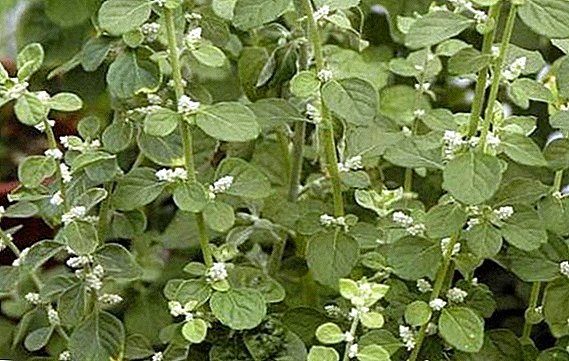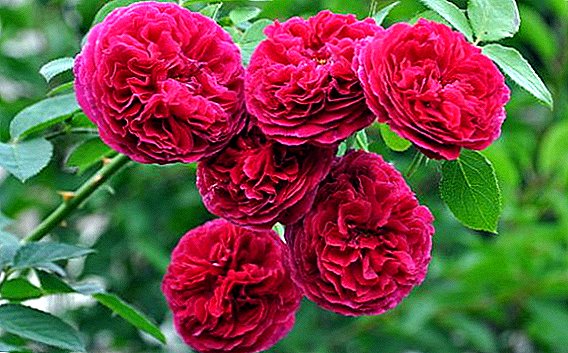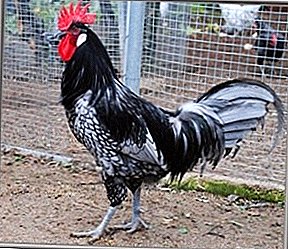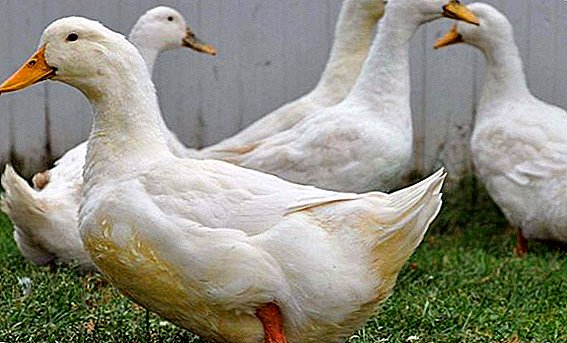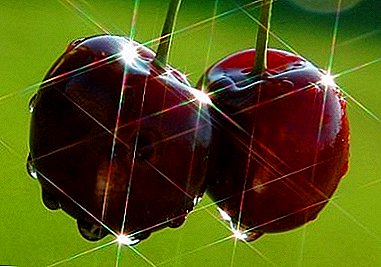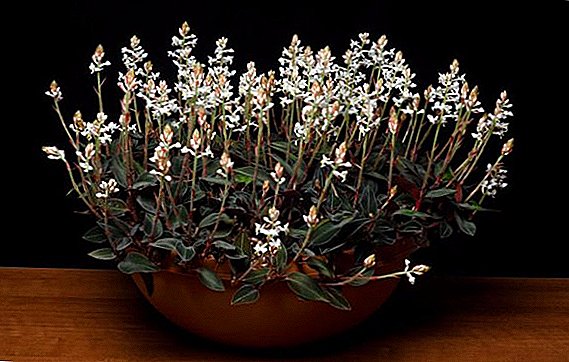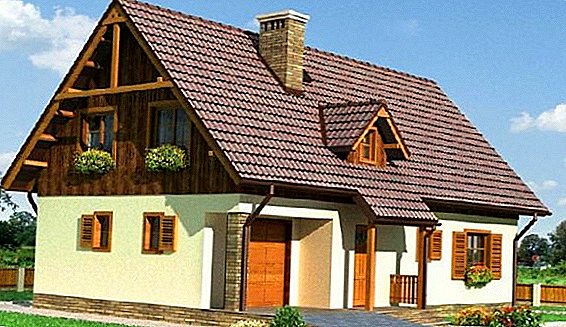
Jasmine-shaped gardenia is an exceptionally beautiful flower that leaves no one indifferent. Many growers dream to acquire this beautiful plant, but do not dare because of its capricious nature. However, the beauty can be "tamed" if you know all the secrets and subtleties of its cultivation.
Description
Jasmine-shaped gardenia, in Latin called Gardenia jasminoides, comes from the Marenov family and is a native of India, China, Japan, Taiwan, Vietnam and subtropical Africa. On the bosom of nature it can be found in the form of evergreen flowering shrub up to 2 meters high. In pot culture the bush reaches no more than 60 cm in height.
In the genus Gardenia there are about 250 species, and in garden floriculture only gardenia jasminoid has taken root. Its large white flowers with a delicate aroma of jasmine fascinate at first sight. They settle down singly or gather into inflorescences of several pieces. Most often flowers are semi-double or terry, similar to a beautiful rose.
Very decorative and dark green leaves. In shape, they are broadly lanceolate with a pointed tip, reaching 10 cm in length. Sheet plate has a relief surface, glossy gloss.
In general, indoor gardenia is a graceful bush with dense foliage, especially charming during the flowering period. With proper care, the life span of an excellent flora representative is up to 7 years.
Gardenia was brought to Europe back in the 18th century. In warm countries, it decorates gardens and parks, and in a cool climate, it can be maintained only in the home or greenhouse conditions. Through the efforts of breeders displayed many varieties of beauty.
Sorta
- Beauty or Latin Beauty - Perhaps the most popular variety with double snow-white flowers. Blooms profusely from early June until autumn.
- Belmont, aka Belmont - it is distinguished by dense flowers and is the most fragrant. It has increased resistance to diseases.
- Amy or aimee - A bush with large flowers of an ideal terry shape, reaching 12 cm in diameter. Able to bloom twice a year.
- Mystery or Latin Mystery - strong and hardy variety with large leaves, growing vertically. Flowers are rather large, flat terry.
- Variegata, aka Variegata - variegated compact form with charming small flowers. In the color of the foliage, transitions of green to light cream are observed. The shrub grows slowly and is ideal for growing in a pot.
- Radicans or Radicans - dwarf variety with small glossy leaves and small double flowers. This variety begins to bloom later than its relatives and is ideal for growing in the technique of bonsai.
Features home care for gardenia jasmine
Gardenia Jasminoid quite capricious and caring for her contains certain difficulties. It reacts sensitively to any changes in the conditions by yellowing the leaves and dropping the buds. Success in growing plants is in strict compliance with all the requirements that it imposes.
Lighting and temperature
The beautiful gardenia is a big lover of bright light, but not active sunshine. In the afternoon it is necessary to protect it from the active sun with a translucent curtain. Otherwise, burns will appear on the leaflets. The best placement is a southwest or west window. On the northern window-sill will need additional lighting.

He especially dislikes changes during flowering and may even drop buds in response to a slight pot rotation.
The optimum temperature for the plant in the summer - from 21 to 24 ° C, in winter - within 16-18 ° C, reduction to 10 ° C is acceptable.
During the winter months, coolness is very important to him, in which it is less depleted in conditions of insufficient daylight.
The beauty suffers greatly from drafts and temperature drops.
But especially she is afraid of hypothermia of the roots and can react to it by falling foliage and rotting of the roots. Therefore you should not put a pot with a green pet on a cold surface. In this case, any elevation will help.
Watering and moisture
You need to water your favorite flower moderately. It is very dangerous for him as overdrying earthen clod, and its waterlogging. In the spring and summer, the ground should always remain slightly damp, in the winter it is allowed to dry slightly between waterings. to a depth of 1.5 cm.
Water should be boiled, filtered from impurities and slightly warm. It is necessary to take as a rule always to drain it from the pan after watering. It is useful to acidify the water with lemon juice (a few droplets per liter). Many nutrients are absorbed by the plant only in an acidic environment.
High humidity - Another important condition for the beauty of beauty. She loves daily spraying. In summer, water treatments should be especially frequent. Flowering shrub should be sprayed carefully so that the droplets of moisture do not fall on the delicate petals. It does not hurt to set the tree on a tray with wet moss and place nearby containers with some water.
Fertilizer and dressing
From spring to autumn, the plant is fed every two weeks, alternating between flowering fertilizers and any organic fertilizers. You can use fertilizer for azaleas. A few times a season, foliar dressing is carried out with preparations containing iron.
Rest period

From October to February, the plant has a period of rest when it is resting and gaining strength. At this time, watering is reduced, and feeding is canceled. Rest for the flower is very important so that it does not become exhausted and is prepared in a new abundant bloom.
Bloom
The beautiful gardenia blooms from early summer to October. She prepares for flowering for a long time. When tying the buds (March-April), the bush is watered moderately, protected from the bright sun, and the room is regularly aired (without drafts!). During this period, the right temperature is especially important: at night - from 16 to 18 ° C, in the afternoon - from 18 to 20 ° C.
With the advent of buds requires the most careful care. All conditions of detention are strictly observed. It is necessary to monitor the temperature, humidity, acidity of the earth, etc. For the slightest mistake of a grower, a capricious beauty can throw off buds. A flowering bush should not be rearranged and twisted around its axis, and it is impermissible to touch the flowers with your hands.
Interestingly, during this period, its snow-white color can change, becoming pale yellow or cream.
Many flower growers, especially beginners, pet flatly refuses to bloom, for which there are many reasons. This may be insufficiently acidic soil, watering with hard water, dry air, poor lighting, lack of or excess nutrients, too low or too high temperatures and other violations of conditions. As you can see, only strict observance of all the rules for care will make the beauty show itself in all its glory.
Pruning
The effective form of the bush is achieved by timely trimming. To obtain pomp in young specimens pinch the sprouting tops of the shoots. In older adults, weak twigs are removed, and the remaining shoots are cut to one third of the length.
To form a stem tree, side branches are removed and only the upper part is left. Upon reaching the desired height, pinch the top point of growth and form a crown, cutting off excess shoots.
Transplantation and soil composition

The flower rarely needs a transplant. It is necessary only when the pot has become too small, the roots have woven over the whole earth or there are problems with them.
Transplantation is best done in the spring or after flowering. Medium version - transshipment every 2-3 of the year.
The soil requires sour, loose and nutritious. It is suitable substrate for azaleas. Or you can please a green friend with a self-prepared mixture of equal parts:
- Sod land
- Coniferous land
- Peat
- Coarse sand, vermiculite or perlite
Over time, such a land with an acidic environment will be leached. Therefore, in the future, it is necessary to acidify it monthly with water with citric acid (a couple drops to 1 l) and blue vitriol (0.5 g per liter of water). Or you can use for watering peat infused water.
Transplant after purchase
Just purchased a beautiful gardenia can not be transplanted. You should wait two or three weeks and make sure that the flowering is over. After this period, the flower is gently removed from the pot (you need to tilt it down and, grasping the base of the stem and shaking the bush, pull it out of the container). Then it should be as thoroughly as possible to clean the roots of the transport of soil, not too useful for them, and put the pet in a new container slightly larger than the previous one. A thick layer of drainage is required at its bottom.
Breeding
- Stem cuttings. In spring or autumn, apical cuttings about 10 cm long are cut from the bush. The upper 3-4 leaves are left, the rest are removed. Cuttings are lowered for a few minutes in Kornevin, then planted in a peat-sand mixture, sprayed and covered with foil, not forgetting to water and ventilate regularly. The cuttings take root in about a month, after which they are transplanted into suitable soil. Rooting occurs faster if you use the lower heated soil.
- Seeds, which can be collected from your own bush or purchased in the store. It is desirable that they were fresh - the old ones have a very low germination rate. Sowing is carried out in early spring. The seeds are soaked for a day and then sown in a peat-sand mixture to a depth of no more than 5 mm. Capacity with crops cover with a film or glass and place in a warm place. with a temperature not lower than 25 ° C. With regular spraying and airing the first shoots can be expected in a month. The plant grown from seeds will bloom only after a couple of years.
Diseases

When growing gardenia jasmine-shaped flower growers face many problems. The most common ones are:
- Why leaves turn yellow. Most likely the reason is temperature fluctuations, improper watering or high acidity of the soil. Improved temperature regime and proper watering will help to correct the situation. The introduction of iron chelate into the soil will help reduce the acidity of the soil.
- Yellow and fall leaves. This problem can arise from a lack of light, inadequate nutrition, drying out or over-wetting of the earthy clod. In this case, you need to put the bush on a well-lit place with a slight shading, feed fertilizer for azaleas and establish the correct watering.
- Why leaves turn black. The reason lies in excessive watering or sunburn. The flooded plant must be transplanted. In case of burns, remove all damaged leaves and put a shade for some time in the shade.
- Blacken and fall leaves and buds. This can occur from overmoistening, rotting of the roots, improper temperature and light conditions. In this case, you need to adjust the correct care and adhere to the recommendations described above. A heavily damaged specimen is transplanted into fresh soil, removing all affected parts. Buds may turn black with careless spraying. It should not be forgotten that they suffer from the ingress of moisture droplets.
- Falling leaves. If the leaves turn sharply yellow or fall still green, it means that the flower has received serious stress in the form of drafts or "drought" in the pot. It should be placed away from the open window or balcony door, adjust the watering and conduct a course of spraying with Epin.
Pests
For beautiful women are dangerous:
- Shchitovka
- Spider mite
- Aphid
Pest control is carried out with the help of insecticides. Conducted two or three treatments at intervals of 7-8 days until the complete destruction of insects. Pest prevention - regular inspection of the foliage, maintaining sufficient moisture, keeping the bush clean.
Needless to say, the care of the garden jasminoid requires a lot of strength, patience and diligence. But the works are not in vain. In response to the care and attention, the green pet will certainly give you a luxurious bouquet of breathtaking beauty.
A photo
Next you will see photos of diseases and home care for the Gardenia Jasminoid flower:






